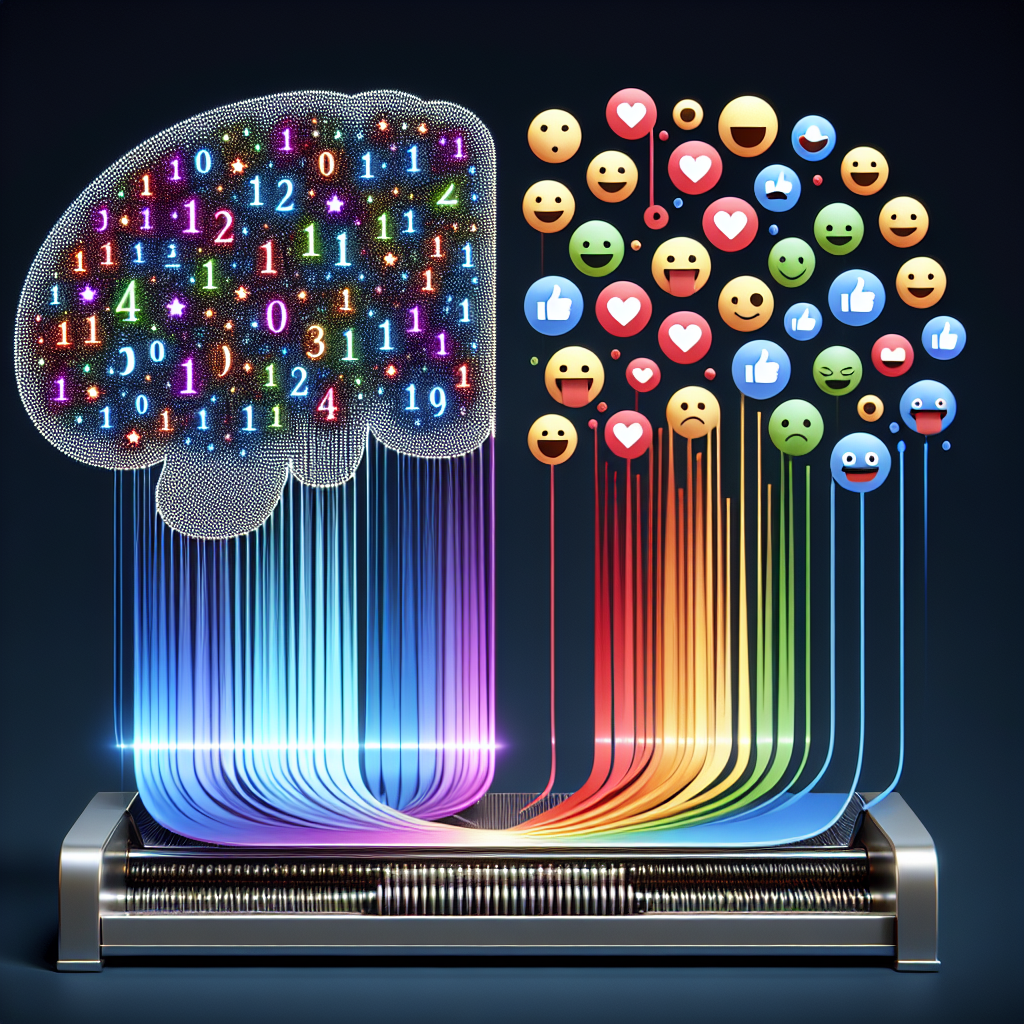Natural Language Processing (NLP) and Sentiment Analysis are two closely related fields in the realm of artificial intelligence and machine learning. NLP is a subfield of AI that focuses on the interaction between computers and humans through natural language. It involves the development of algorithms and models that enable computers to understand, interpret, and generate human language in a way that is meaningful and useful. Sentiment Analysis, on the other hand, is a specific application of NLP that focuses on analyzing and understanding the sentiment or emotion expressed in text data.
NLP has a wide range of applications in various industries, including healthcare, finance, marketing, customer service, and more. Some common applications of NLP include chatbots, machine translation, speech recognition, text summarization, and sentiment analysis. In recent years, sentiment analysis has gained popularity due to the increasing amount of text data available on the internet, such as social media posts, customer reviews, and news articles. Businesses can use sentiment analysis to gain insights into customer opinions, preferences, and emotions, which can help them make more informed decisions and improve their products and services.
One of the key challenges in NLP and sentiment analysis is the ambiguity and complexity of natural language. Human language is highly nuanced and context-dependent, making it difficult for computers to accurately interpret and analyze text data. For example, words can have multiple meanings depending on the context in which they are used, and sarcasm or irony can change the intended sentiment of a sentence. Additionally, language is constantly evolving, with new slang terms and expressions emerging all the time. These challenges make it crucial for NLP researchers and practitioners to develop sophisticated algorithms and models that can effectively handle the complexity of natural language.
There are several approaches to sentiment analysis, including rule-based systems, machine learning models, and deep learning models. Rule-based systems rely on predefined rules and heuristics to classify text data into positive, negative, or neutral sentiment categories. While rule-based systems are simple and interpretable, they are limited by the need for manual rule creation and may not perform well on complex or ambiguous text data. Machine learning models, on the other hand, learn patterns and relationships in the data to make predictions about sentiment. These models can be trained on labeled data and can capture more nuanced relationships between words and phrases. Deep learning models, such as recurrent neural networks (RNNs) and transformers, have shown promising results in sentiment analysis by capturing long-range dependencies and context in text data.
One of the key challenges in sentiment analysis is the issue of sentiment polarity. Sentiment polarity refers to the degree of positivity or negativity expressed in a text data. While some text data may express a clear positive or negative sentiment, others may be more neutral or mixed. Sentiment analysis models need to be able to accurately capture the nuances of sentiment polarity in order to provide meaningful insights. Additionally, sentiment analysis models need to be robust to noise and outliers in the data, such as typos, misspellings, or grammatical errors.
Another challenge in sentiment analysis is the issue of sentiment subjectivity. Sentiment subjectivity refers to the degree to which sentiment is expressed in a subjective or opinionated manner. For example, a statement like “I love this product” is highly subjective and opinionated, while a statement like “The product arrived on time” is more objective and factual. Sentiment analysis models need to be able to differentiate between subjective and objective statements in order to accurately classify sentiment.
In recent years, there has been a growing interest in the ethical implications of NLP and sentiment analysis. Bias and fairness issues have been a major concern, as AI models can inadvertently perpetuate and amplify existing biases in the data. For example, sentiment analysis models trained on biased or unrepresentative data may produce biased or unfair predictions. Researchers and practitioners in the field of NLP and sentiment analysis are actively working to address these issues by developing more transparent, interpretable, and fair AI models.
In conclusion, NLP and sentiment analysis are rapidly evolving fields with a wide range of applications and challenges. As the amount of text data continues to grow, the need for sophisticated NLP and sentiment analysis models will only increase. By developing robust, accurate, and fair AI models, researchers and practitioners can unlock the full potential of natural language understanding and sentiment analysis.
FAQs:
Q: What is the difference between NLP and sentiment analysis?
A: NLP is a subfield of AI that focuses on the interaction between computers and humans through natural language. It involves the development of algorithms and models that enable computers to understand, interpret, and generate human language. Sentiment analysis is a specific application of NLP that focuses on analyzing and understanding the sentiment or emotion expressed in text data.
Q: What are some common applications of NLP?
A: Some common applications of NLP include chatbots, machine translation, speech recognition, text summarization, and sentiment analysis.
Q: What are some challenges in sentiment analysis?
A: Some key challenges in sentiment analysis include sentiment polarity, sentiment subjectivity, bias and fairness issues, and the ambiguity and complexity of natural language.
Q: How can businesses benefit from sentiment analysis?
A: Businesses can use sentiment analysis to gain insights into customer opinions, preferences, and emotions, which can help them make more informed decisions and improve their products and services.

